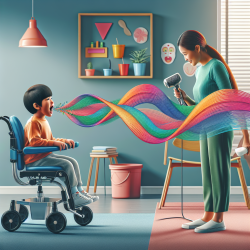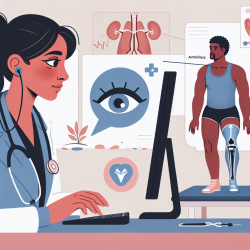Conductive Education (CE) has been gaining attention as a method that combines special education and rehabilitation for individuals with Cerebral Palsy (CP). A recent study titled "Exploring the quality of life of adolescents with Cerebral Palsy participating in conductive education around the Pannonian Basin" offers compelling insights that can help practitioners improve their approaches to therapy.
Key Findings and Implications for Practitioners
The study involved 40 adolescents with CP and their caregivers from Hungary and surrounding countries. It used the Cerebral Palsy Quality of Life for Teenagers (CP QoL-Teen) questionnaire to measure various domains of quality of life (QoL). Here are some key takeaways:
1. Personalized Education Matters: The study found that personalized education plans, particularly those offered in segregated schools, can significantly improve the QoL for teens with CP. Practitioners should consider tailoring their therapy plans to individual needs and abilities.
2. Pain Perception: Interestingly, while Hungarian teens reported experiencing more pain, they were less concerned about it compared to their caregivers. This suggests that CE environments may help adolescents manage their perceptions of pain more effectively.
3. Social Well-being: Adolescents in segregated CE settings reported higher social well-being, possibly due to the supportive group environment. This highlights the importance of fostering social interactions in therapy settings.
4. Parental Perspectives: There was a notable difference between the perceptions of parents and teens, especially in the 'Feelings about functioning' domain. Practitioners should engage both teens and their caregivers in discussions to bridge these perception gaps.
5. Access to Services: Both Hungarian and Pannonian Basin parents reported dissatisfaction with access to services. This is a crucial area for advocacy and improvement.
Practical Steps for Practitioners
Based on these findings, here are some actionable steps practitioners can take:
- Implement Personalized Plans: Tailor educational and therapeutic interventions to meet the unique needs of each adolescent.
- Enhance Social Interactions: Create opportunities for social engagement within therapy sessions to boost social well-being.
- Pain Management Strategies: Incorporate pain management techniques that focus on altering pain perception.
- Parental Involvement: Actively involve parents in the therapy process to ensure their perspectives are considered.
- Advocate for Better Services: Work with local authorities and organizations to improve access to necessary services and equipment.
Encouraging Further Research
While this study provides valuable insights, more research is needed to explore the long-term effects of CE on QoL in different socio-cultural settings. Practitioners are encouraged to participate in or initiate further research to validate these findings and explore new avenues for improving the lives of adolescents with CP.
To read the original research paper, please follow this link: Exploring the quality of life of adolescents with Cerebral Palsy participating in conductive education around the Pannonian Basin.










